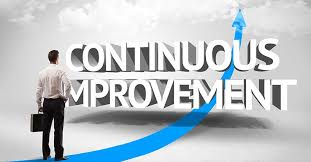Boeing is not the first company to find itself amid a massive scandal. You can think of Siemens’ bribery and corruption scandal, the VW emissions-testing scandal, the Wells Fargo fraudulent accounts scandal, or any other myriad of corporate scandals where culture failed and created a toxic culture. The question for any organization in such a situation is how to transform its culture. Currently running on the Culture Crafters podcast on the Compliance Podcast Network is a 5–part of podcast series with myself and Sam Silverstein, the most trusted voice in America on accountability. (The Culture Audit™ is the sponsor of this blog post series.)
In this companion, 5-part blog post series, we have looked at how a company in the depths of such a toxic culture can begin to make a comeback by planning and taking concrete steps to turn around and rebuild its culture. In this concluding Part 5, we show why you must not simply stop after implementation but must monitor your culture continuously and work to improve it continuously. It is an ongoing work in progress, and you can always continue working on your corporate culture.
Ongoing monitoring is not something compliance professionals are unaware of or have never heard about. This concept must be used in your culture management strategy as well. You must assess how your culture management strategy is doing continuously. This is one of the power outcomes of The Culture Audit™ (the sponsor of this blog post series). Not only have you created a baseline of where your culture is at any point in time, but through ongoing use of the Culture Audit, you can measure your specific indices of culture on a go-forward or ongoing basis. You can then continually work to update as appropriate. If your organization needs greater trust, you can put further work into this through your speak-up culture.
Creating an organization’s speak-up culture is essential for fostering open communication, transparency, and employee trust. Such a culture encourages individuals to raise concerns, flag potential issues, and contribute to a safer and more accountable work environment. By prioritizing a speak-up culture, companies can proactively address challenges, prevent safety risks, and promote a culture of continuous improvement.
The significance of a speak-up culture must be balanced as a critical factor in ensuring organizational success and psychological safety. Silverstein emphasized the need for employees to feel safe, valued, and empowered to voice their opinions without fear of reprisal. He highlighted the role of trust and psychological safety in enabling individuals to speak up, noting that a culture that supports open communication leads to better decision-making processes and overall performance. The insights shared underscored the pivotal role of a speak-up culture in shaping a positive and proactive organizational environment.
Accountability in leadership is fundamental in setting the tone for organizational culture and fostering a sense of responsibility and integrity among team members. Leaders who demonstrate accountability model desired behaviors and create a culture where individuals take ownership of their actions and outcomes. By holding themselves and others accountable for their commitments and decisions, leaders cultivate a culture of trust, respect, and ethical conduct.
Leadership will always have a transformative impact on organizational dynamics. Emphasizing that accountability is a way of life rather than a mere task demonstrates leaders’ profound influence in shaping the values and norms within their teams. There must be consistency and fairness in holding individuals accountable. Leaders play a pivotal role in setting expectations and driving cultural change. The discussion underscores the critical role of leadership accountability in fostering a culture of integrity and excellence within organizations.
Changing organizational culture is a complex and multifaceted endeavor that requires a deliberate and strategic approach. Organizations seeking to shift their culture must assess the existing norms, values, and behaviors that shape their environment. By identifying areas for improvement and aligning cultural practices with desired outcomes, companies can embark on a journey of cultural transformation that enhances employee engagement, performance, and overall organizational success.
Companies can initiate meaningful change by defining and measuring the current culture, investing in training and education, and holding individuals accountable for upholding cultural values. You must align cultural initiatives with business objectives and ensure that cultural transformation efforts are embedded in every aspect of the organization. Organizations face challenges and opportunities when navigating cultural change, highlighting the critical role of leadership in driving lasting transformation.
The crucial role of leadership in shaping organizational culture provided valuable insights into the steps leaders can take to create a positive and thriving workplace environment. By prioritizing values, fostering open discussions about culture, and making data-driven decisions, organizations can pave the way for long-term success and employee well-being.









